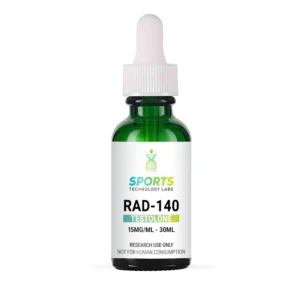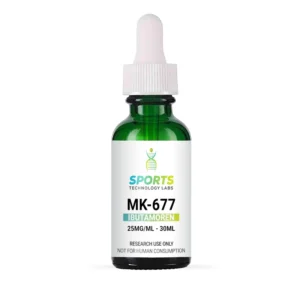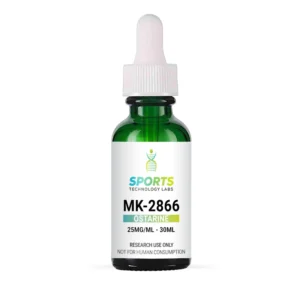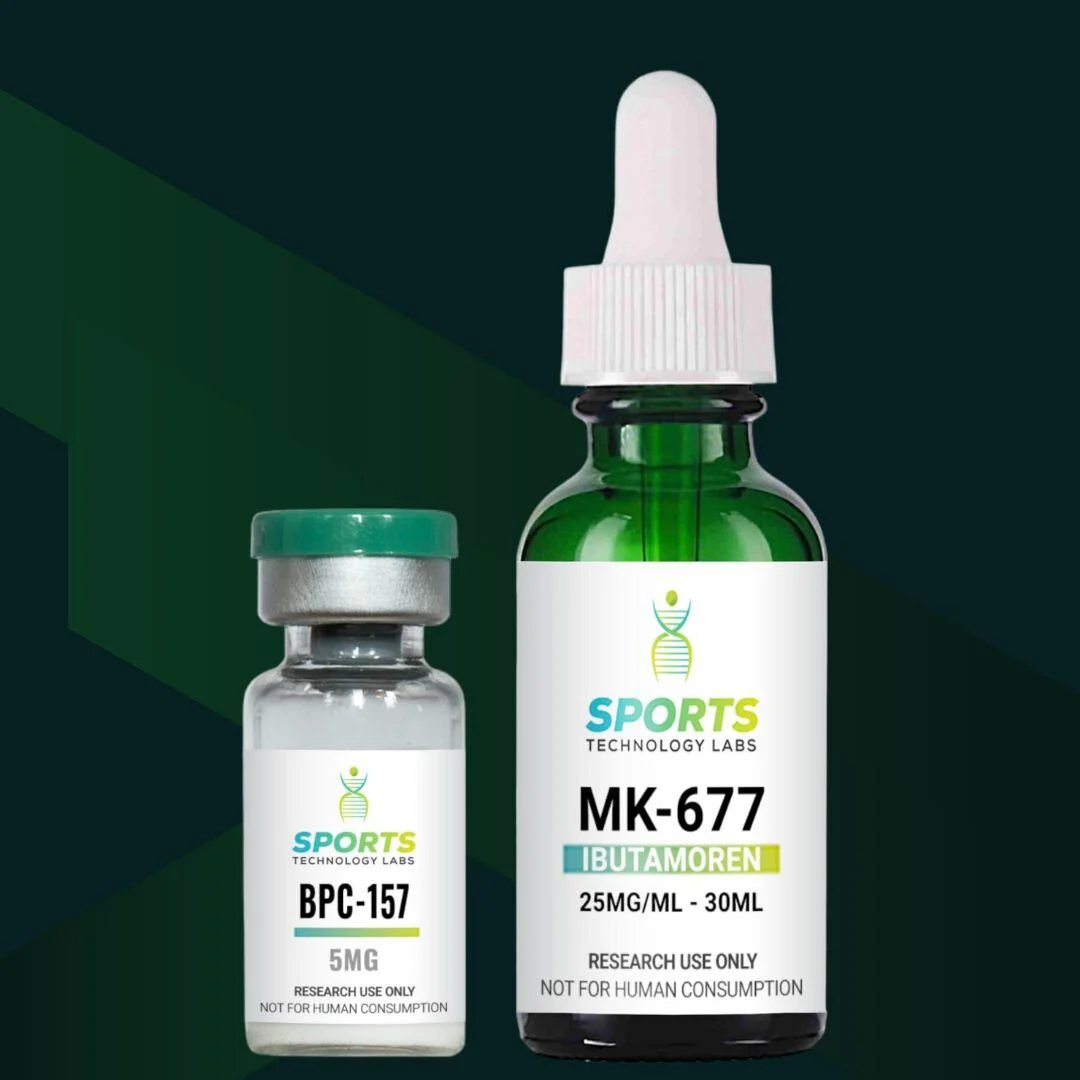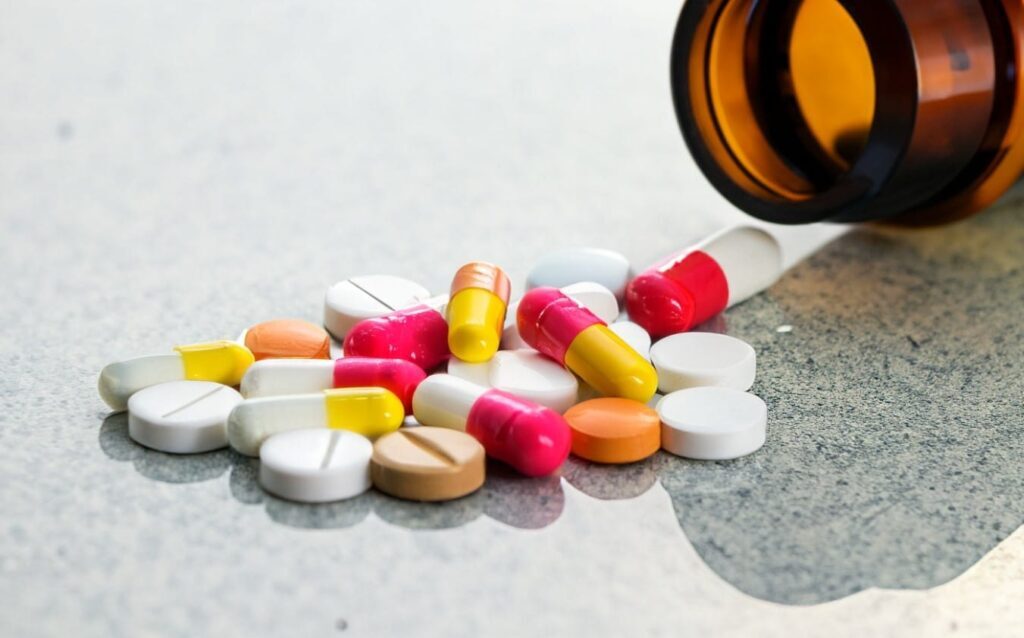
The beneficial properties of anabolic steroids have been exploited in research, sports medicine, and other arenas (both legally and illegally) for years.
The numerous side effects of anabolic steroids have, however, presented a complexity that has had scientists racking their brains for a tenable solution. Gynecomastia (breast enlargement in men) is just one of the many unfortunate side effects of steroid treatment, other benefits notwithstanding.
A new class of steroid look-alike compounds, selective androgen receptor modulators (SARMs), has emerged from a massive research effort. This is a somewhat misrepresented class of compounds, and many mistake SARMs for steroids.
News on SARMs and the unique benefits they offer is causing excitement as many wonder whether scientists have finally created a class of safer steroids. There are many variables surrounding SARMs vs. steroids vs. prohormones that this myth-busting article addresses comprehensively.
Read on to learn more about SARMs vs. steroids vs. prohormones and their differences.
What Are Steroids?
Anabolic steroids are synthetic derivatives of testosterone designed to enhance muscle mass, strength, and performance. While effective, they come with significant androgenic side effects, including gynecomastia, liver toxicity, and cardiovascular risks (Kicman, 2008).
Benefits of Steroids Found in Research
- Increased muscle mass and strength (Basaria, 2010)
- Faster recovery and endurance (Hartgens and Kuipers, 2004)
- Enhanced protein synthesis (Bhasin et al., 1996)
Side Effects of Steroids
- Hair loss (Shalender et al., 1996)
- Acne (Dohle et al., 2003)
- Liver damage (Nieschlag and Behre, 2004)
- Suppression of natural testosterone production (Bhasin et al., 1996)
- Increased risk of heart disease (Kanayama et al., 2008)
Legality of Steroids
Steroids are classified as Schedule III controlled substances in the U.S., meaning they are only available via prescription for medical use (DEA, 2021).
What Are SARMs?
Selective androgen receptor modulators (SARMs) are investigational compounds designed to bind to androgen receptors in muscle and bone tissue selectively, minimizing androgenic effects elsewhere in the body (Narayanan et al., 2008).
Research Studies of SARMs Focus on:
- Lean muscle mass (Chen et al., 2005)
- Bone density (Hanada et al., 2003)
- Androgenic side effects compared to steroids (Basaria, 2010)
Side Effects of SARMs Found in Research Thus Far:
- Suppression of natural testosterone (though less severe than steroids) (Sinha-Hikim et al., 2002)
- Potential liver toxicity in some cases (Basaria et al., 2013)
- Possible impact on lipid profiles (Chen et al., 2005)
Legality of SARMs
SARMs are legal for research purposes but are banned for human consumption and in competitive sports by organizations such as WADA (WADA, 2021).
What Are Prohormones?
Prohormones are precursors to anabolic steroids that convert into active hormones once ingested. While they are marketed as a middle ground between SARMs and steroids, they still carry significant risks (Van Londen et al., 2001).
Research Studies of Prohormones Focus on:
- Muscle growth (Brown et al., 2000)
- Available as dietary supplements in some regions, but NOT in the USA (Yesalis et al., 2000)
Side Effects of Prohormones
- Liver toxicity (Pope et al., 2014)
- Hormonal imbalances (Hartgens and Kuipers, 2004)
- Gynecomastia (Bhasin et al., 1996)
- Increased risk of cardiovascular disease (Kanayama et al., 2008)
Legality of Prohormones
Prohormones exist in a legal gray area. Some remain available as dietary supplements, while others have been classified as controlled substances (FDA, 2019).
SARMs vs. Steroids vs. Prohormones: Key Differences Found in Research
| Feature | SARMs | Steroids | Prohormones |
|---|---|---|---|
| Legal Status | Research Only | Prescription Only | Varies by Compound |
| Side Effects | Lower | High | Moderate to High |
| Liver Toxicity | Low to Moderate | High | High |
| Testosterone Suppression | Mild to Moderate | Severe | Moderate to Severe |
| Price | $50 – $200 | $100 – $500+ | $40 – $150 |
Are SARMs Like Steroids?
The short answer is no, selective androgen receptor modulators, SARMs, are not steroids. SARMs are ligands that act “selectively” on an androgen receptor (s). The selective action on androgen receptors (ARs) makes the most significant difference between SARMs and steroids.
SARMs produce anabolic effects when they bind to androgen receptors with minimal androgenic effects, but they are not anabolic steroids.
Anabolic activity triggered by SARMs and steroids increases muscle mass and bone density in clinical studies.
According to research, androgenic effects increase masculinization. SARMs, however, are unlike anabolic steroids as they produce minimal androgenic effects because of their selective action on androgen receptors. Steroids, on the other hand, trigger amplified androgenic effects.
How different are SARMs from anabolic steroids?
3 Differences between SARMs and Steroids
Selective androgen receptor modulators and steroids have one striking similarity. They are both ligands of androgen receptor(s) and hence they trigger anabolic effects that can be used in a clinical setting.
The two have a few significant differences, though, that paint SARMs in a fairer light. These are discussed below.
1. Interaction with Androgen Receptors
Steroids bind to all androgen receptors, but SARMs don’t. SARMs have been chemically engineered to target androgen receptors that are involved with muscle and bone growth, but they avoid “off-targets.” This enhances their positive effects while reducing some of their adverse effects.
2. Side Effects
According to research, SARMs have fewer androgenic and estrogenic side effects compared to steroids because of their selective action on androgen receptors and lack of conversion to estrogens.
Steroid action on the androgen receptors, conversely, is attracted to all Androgen Receptors, including those in the prostate, scalp, and breast.
The lack of selective actions causes a myriad of adverse effects, including the following:
In MEN
Hair loss
Reduction in the size of the testicles
Increase in the size of the prostate glands
Breast enlargement (gynecomastia)
In WOMEN
Acne
Enlarged clitoris
Deepening of voice
Growth of body hair
Other Serious Complications
Blood clots
Liver failure
Heart attack
3. Legality
Anabolic steroids are classified as class 3 compounds in the U.S. and can only be used as prescription medications. They are classified as class C compounds in the UK and are also prescription meds.
SARMs are approved only as investigational compounds in the U.S. They are banned for all other purposes, including sports, such as the World Anti-Doping Agency.
The steroids vs. selective androgen receptor modulators conversation must continue, as awareness of SARMs is increasing. Through conducting research, they are beginning to lose their stigma as they’re increasingly distinguished from steroids.
It is to note that neither of these chemicals is a dietary supplement and should not be marketed as such. SARMs are not for human consumption at this time and are considered research chemicals only.
SARMS should not be marketed as dietary supplement products. The National Collegiate Athletic Association bans these chemicals, and is the anti-doping agency, WADA, the World Anti-Doping Agency.
They are also a part of the operation to supplement safety. These chemicals are only approved for research purposes.
4 Potential Benefits of SARMs Researchers Are Studying
Selective androgen receptor modulators are investigational compounds that are of great interest to the global research community.
While the benefits of steroids are widely known, research indicates SARMs offer similar benefits without associated virilizing, feminizing, and other off-target effects. Here are some of the effects of SARMs that are under investigation by researchers:
1. SARMs Increase Lean Muscle Mass and Promote Fat Loss
Preliminary studies have shown that one or more SARMs increase lean muscle mass and muscle strength. A survey on SARMs, for example, found that SARMs differ from commonly used androgenic steroids.
This is due to their ability to stimulate muscle mass and bone growth with lesser prostatic and virilizing effects in female animals. This finding can elicit more research related to muscle wasting disorders and their impact on prostate cancer.
2. Primary or Secondary Hypogonadism (potential therapy for reduced testosterone production)
A recent study investigated SARMs as a potential therapy for male hypogonadism (reduced testosterone levels and production).
The researchers found that SARMs may provide a valid alternative to testosterone replacement therapy and limit the adverse effects of testosterone treatment. RAD-140 has been the primary target for these studies, though it has yet to prove its capability in providing the vast array of benefits associated with healthy testosterone levels. More research is needed to confirm whether this is valid, as androgenic effects seem absent from SARMs that are presently in circulation.
3. Potential Therapy for Osteopenia or Osteoporosis
A 2006 study investigated the effects of SARMs on osteoporosis in a rat model. The researchers found that SARMs therapy is effective in reducing osteoporosis fractures and offers greater benefits compared to current therapies that are anti-resorptive. This finding can elicit more research related to bone tissue.
4. Potential Therapy for AIDS or Cancer-Related Cachexia
Cachexia refers to the excessive muscle loss that occurs with cancer. A preliminary study on Ostarine (SARMs) has shown that it may help manage cancer-related muscle loss (cachexia) and cause minimal side effects. The researchers recommended further studies.
Researchers are exploring the use of SARMs in other areas, such as the treatment of breast cancer and prostate cancer. The potential of SARMs is immense and very exciting. More clinical trials must be completed to validate these findings on breast cancer.
3 Pitfalls to Avoid When Buying SARMs
Researchers can purchase selective androgen receptor modulators legally for investigational purposes as these are not dietary supplements and are not to be used for human consumption. There’s a need to be cautious since most of the SARMs in the market are not legitimate.
A study recently published in the Journal of the American Medical Association revealed that only about 50% of products marketed as SARMs contain any SARM as an active ingredient. Here are three pitfalls to avoid when purchasing SARMs.
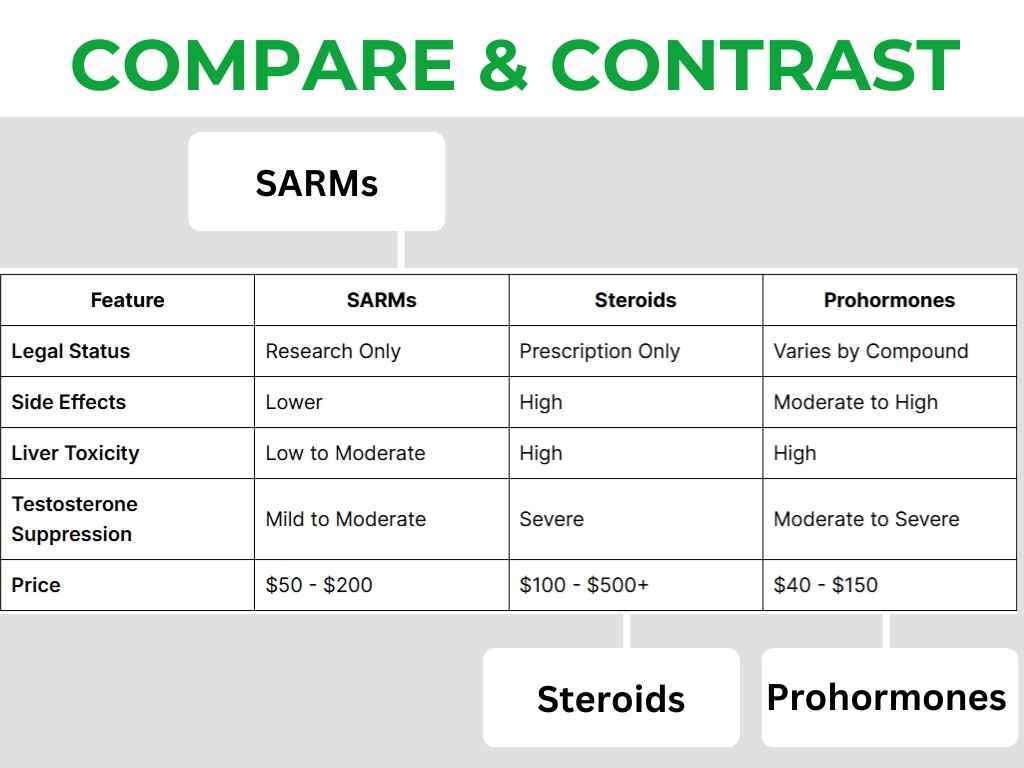
1. Do Not Purchase SARMs from the Black Market
The black market is flooded with products marketed as SARMs that are likely to be offered at cheap prices and falsely advertised as dietary supplements. Most of these products don’t contain any SARMs, and you should therefore avoid them.
2. Do Not Purchase SARMs That Have Exaggerated Claims
Some SARMs providers will make false and exaggerated claims about what SARMs can do, but these are research chemicals that are for research and clinical trials only. Always counter-check claims against scientific research evidence and avoid vendors making false claims.
3. Do Not Purchase SARMs without Knowing Exactly What You Want
There are different types of SARMs on the market, and they each have different properties. It is essential to investigate the different types of SARMs, their mechanism of action, adverse effects, and side effects before you make that order.
SARMs offer a rare opportunity to exploit the anabolic effects of steroids without being encumbered by most of the distressing androgenic steroid side effects. To learn more about our SARMs for sale or to learn about our newest selection of peptides, you can always talk to experts from the Sports Technology Labs.
Pure compounds are tested and certified by accredited American third-party labs that accept phone calls to verify the validity of their certificates. Read more on the science behind SARMs so you know exactly what to look for.
Check Out Our Newest Selection of Peptides
Pure compounds are tested and certified by accredited American third-party labs that accept phone calls to verify the validity of their certificates.
Are SARMs Better Than Steroids and Prohormones?
The answer depends on the use case:
- For research purposes, SARMs are being investigated as a safer alternative to steroids.
- For minimizing side effects, SARMs offer an advantage over both steroids and prohormones, as seen in recent research studies, but this is still under investigation.
Pricing Comparison
The cost of SARMs, steroids, and prohormones varies significantly depending on the compound and source.
| Compound Type | Price Range (per cycle) |
| SARMs | $50 – $200 |
| Steroids | $100 – $500+ |
| Prohormones | $40 – $150 |
Steroids tend to be the most expensive due to their potency and black-market demand, while SARMs fall in the mid-range as research chemicals.
Visit the Sports Technology Labs Blog for News and Information about SARMs
Look no further than Sports Technology Labs for the highest quality RAD-140, Ligandrol, Ostarine, MK-677, and other SARMs. Visit the Sports Technology Labs research blog for information about new products, updates in the industry, side effects, new scientific literature, and product comparisons.
WARNING: Selective androgen receptor modulators, SARMs, are not dietary supplements. They are research chemicals that should be utilized by professionals only. Their health risks are currently under study and being researched in animal models.
Scientific References:
1. Rahnema, C. D., Lipshultz, L. I., Crosnoe, L. E., Kovac, J. R., & Kim, E. D. (2014). Anabolic steroid–induced hypogonadism: diagnosis and treatment. Fertility and sterility, 101(5), 1271-1279.
2. Machek, S. B., Cardaci, T. D., Wilburn, D. T., & Willoughby, D. S. (2020). Considerations, possible contraindications, and potential mechanisms for deleterious effects in recreational and athletic use of selective androgen receptor modulators (SARMs) instead of anabolic androgenic steroids: A narrative review. Steroids, 164, 108753.
3. Narayanan, R., Coss, C. C., & Dalton, J. T. (2018). Development of selective androgen receptor modulators (SARMs). Molecular and cellular endocrinology, 465, 134-142.
4. Hanada, K., Furuya, K., Yamamoto, N., Nejishima, H., Ichikawa, K., Nakamura, T., … & Oguro, N. (2003). Bone anabolic effects of S-40503, a novel nonsteroidal selective androgen receptor modulator (SARM), in rat models of osteoporosis. Biological and Pharmaceutical Bulletin, 26(11), 1563-1569.
5. Appuchu, M. B. (2016). To study the impact of dietary and lifestyle intervention (counselling) on physical fitness levels of adults enrolled in selected gyms in Manipal (Doctoral dissertation, Manipal University).
6. Urhausen, A., Torsten, A., & Wilfried, K. (2003). Reversibility of the effects on blood cells, lipids, liver function, and hormones in former anabolic–androgenic steroid abusers. The Journal of steroid biochemistry and molecular biology, 84(2-3), 369-375.
7. Collins, R. (2005). Changing the game: the congressional response to sports doping via the anabolic steroid control act. New Eng. L. Rev., 40, 753.
8. Gao, W., & Dalton, J. T. (2007). Expanding the therapeutic use of androgens via selective androgen receptor modulators (SARMs). Drug discovery today, 12(5-6), 241-248.
9. Mantovani, G., & Madeddu, C. (2010). Cancer cachexia: medical management. Supportive Care in Cancer, 18, 1-9.
10. https://www.uspharmacist.com/article/recreational-use-of-selective-androgen-receptor-modulators
11. Basaria, S. (2010). Androgen abuse in athletes: detection and consequences. The Journal of Clinical Endocrinology & Metabolism, 95(4), 1533-1543.
12. Bhasin, S., Woodhouse, L., Casaburi, R., Singh, A. B., Bhasin, D., Berman, N., … & Storer, T. W. (2001). Testosterone dose-response relationships in healthy young men. American Journal of Physiology-Endocrinology and Metabolism.
13. Chen, J., Kim, J., & Dalton, J. T. (2005). Discovery and therapeutic promise of selective androgen receptor modulators. Molecular Interventions, 5(3), 173.
14. Hartgens, F., & Kuipers, H. (2004). Effects of androgenic-anabolic steroids in athletes. Sports medicine, 34, 513-554.
15. Kanayama, G., Cohane, G. H., Weiss, R. D., & Pope, H. G. (2003). Past anabolic-androgenic steroid use among men admitted for substance abuse treatment: an underrecognized problem?. Journal of Clinical Psychiatry, 64(2), 156-160.
16. WADA (2021). Prohibited list. World Anti-Doping Agency. Retrieved from [WADA Website].

